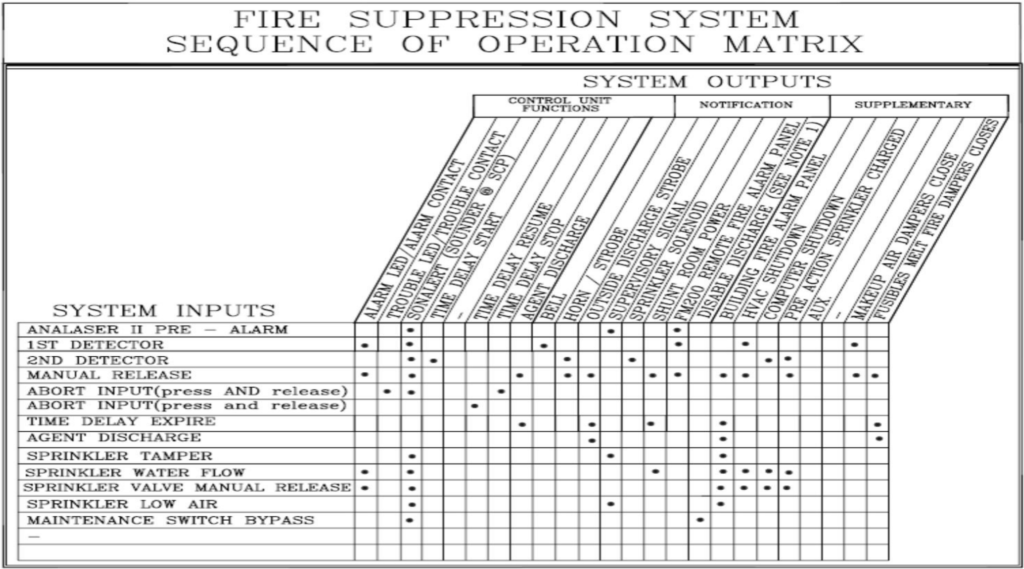OCCUPANCY BASED REQUIREMENTS FOR FIRE ALARM SYSTEM
International Building Code (2018 Edition) Occupancy- Based Requirements

OCCUPANCY BASED REQUIREMENTS
NFPA 1, NFPA 101 & NFPA 5000 (2018 Edition) Occupancy- Based Requirements


- System Documentations
- Documentation is one of the most important concepts of NFPA 72. It is also the most frequently ignored requirement
- All fire alarm system installations shall have a written statement Record of Completion
- Allows you to specify any deviations from the code
- Building owner shall be provided with documents
- A record of maintenance, inspection and tests shall be provided
- Date work was performed
- Test frequency from NFPA 72
- Status of problems identified during test stating owner was notified, problem was corrected and successfully retested.

Fire Alarm Symbols and Terminology
The 1994 edition of NFPA 170 represented the completion of an effort to combine four previously separate documents that covered fire safety
symbols for different purposes
- NFPA 171, Public Fire safety Symbols
- NFPA 172, Fire Protection Symbols for Architectural and Engineering drawings
- NFPA 174, Fire Protection Symbols for Risk Analysis Diagrams
- NFPA 178, Symbols for Fire Fighting Operations Also refer to NFPA 72 Annex for fire alarm icons.

Electrical Workmanship Standards
- Fire alarm systems are electrical in nature and the installation methods are governed by the National Electric Code or NEC
- The NEC is distributed by the National Fire Protection Association (NFPA) and is also referred to as NFPA 70
- The fire alarm code mandates how fire alarm devices and systems are installed and commonly refers to the electrical code for installation
- All fire alarm technicians must be familiar with the installation requirements and methods described in the NEC.
NEC Requirements :
- Shall be grounded in accordance with Article 250
- Wiring shall be installed in a workmanship-like manner
- Comply with chapters 1-4 unless modified by chapters 5-8
- Fire alarm system wiring requirements are specifically listed in Article 760
- Electrical requirements for classified areas or those that contain a hazardous atmosphere are listed in Article 500
- Requirements for fiber optic cabling and raceways are listed in Article 770.
Wiring Fundamentals
- Electrical workmanship standards are a critical component to the proper operation of any electrical system
- All electrical installations are only as good as the connections of wiring and devices
- A loose wire or bad connection can create intermittent faults that are difficult to locate and correct
- In some installations where workmanship is not a consideration, it is less labor intensive to removed and replace the wiring than try to locate the fault
- Special care should be taken to make proper electrical connections associated with a fire alarm installation.
Conduit Fill
- Electrical conduit, whether it be metal electrical metal tubing ( EMT), plastic (PVC), or flexible conduit, each have their own maximum
number of electrical wires allowed in the conduit. Their fill capacities are different, even though they may be the same sized conduit - PVC is a plastic conduit that is often used for underground installations and in wet areas
- EMT conduit is a metal thin walled that comes in ten foot lengths
- Flexible conduit is normally made of twisted metal and is flexible
- Chapter 9 of NEC contains tables to calculate conduit fill.
Box Fill
- Box fill isn’t just the number of wires in the box — it’s the total volume of the conductors, devices, and fittings in a box
- Box volume – amount of space for conductors, devices, and fittings
- Calculate box fill per NEC Table 314.16(B)
- Calculate box volume per NEC Table 314.16(A).
Role of NEC
The Fire Protective Signaling Systems portion of the code (NEC Article 760)details the specific requirements for wiring and equipment installation for fire protection signaling systems. Specifications include installation methods, connection types, circuit identification, and wire types (including gauges and insulation).
The NEC®places restrictions on the number and types of circuit combinations that can be installed in the same enclosure.
Types of Cable
▪ Power-limited fire alarm (FPL) cable : Power-limited non-plenum- rated fire alarm cable is a general purpose cable that is not rated for plenum spaces.
▪ Power-limited fire alarm riser (FPLR) cable : Power-limited riser-rated fire alarm cable is installed where vertical cable runs are required. This cable must have low flammability, but smoke generation characteristics can be higher than those for a plenum-rated cable.
▪ Power-limited fire alarm plenum (FPLP) cable : Power-limited plenum-rated fire alarm cable can be installed in plenums or other similar spaces. This cable must meet strict flammability requirements and must have low smoke generation characteristics.
▪ Nonpower-limited fire alarm (NPLF) circuit cable : Non-power-limited fire alarm cable is for general use but not for plenum, riser, ducts, or spaces where there is environmental air.
▪ Nonpower-limited fire alarm plenum (NPLFP) circuit cable : Non- power-limited fire alarm plenum cable can be installed in plenums, ducts, and other similar spaces that must be fire resistant and must have low smoke generation characteristics.

